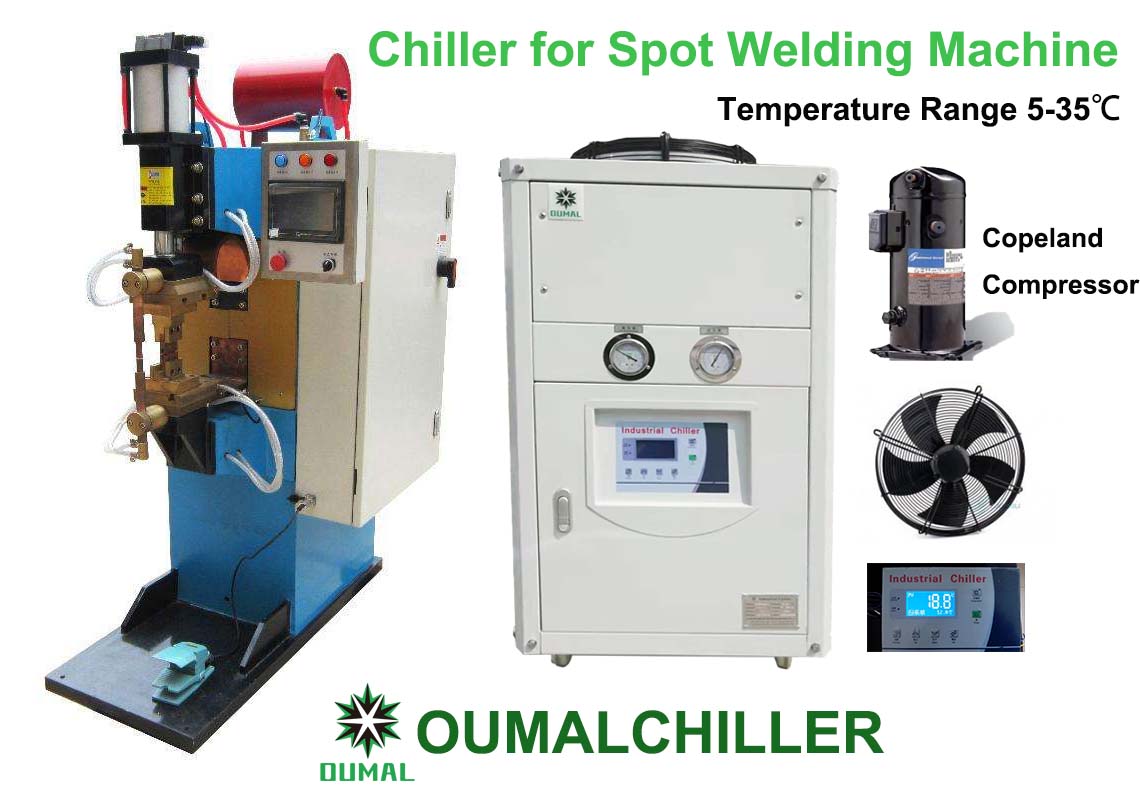Spot welding machine is a kind of mechanical equipment. It adopts the principle of double-sided double-point overcurrent welding. When working, two electrodes pressurize the workpiece so that the two layers of metal form a certain contact resistance under the pressure of the two electrodes, and the welding current changes from one When the electrode flows through the other electrode, the two contact resistance points form an instant thermal fusion, and the welding current flows from the other electrode to the electrode along the two workpieces to form a loop instantly, and will not damage the internal structure of the welded workpiece. Because the resistance welding machine is in the working process, the resistance head is prone to high temperature, which affects the accuracy of the processed product, so a chiller is needed to cool it next to ensure the accuracy of the processed product. The spot welding machine is equipped with a chiller, which can improve the safety and stability of the welding work and extend the life of the welding machine.
Industrial chillers used for spot welding operate like recirculating coolers as they use the same closed-loop setups. However, process chillers can be modified to handle industrial cooling on a larger scale. Industrial chillers also have condensers, evaporators, and automated temperature controls that make them more efficient. Air cooled chiller is a good choice for spot welding machine, It’s easy to installation and move.
A general rule for sizing a chiller is that, for every 100KVA of welder, you should have about a 1-ton chiller. For example, if you want to cool 4 welders that are 100KVA each, you will need a 4-ton chiller. If you want to cool a 300KVA machine, you will need a 3-ton chiller. See below for further sizing details.
To calculate for resistance welding:
BTU/hr = (welder KVA) x (duty cycle) x (0.85) x (0.6) x 3415 BTU/hr
To calculate for resistance welding:
BTU/hr = (welder KVA) x (duty cycle) x (Eff power supply) x (Eff heat collection) x 3415
Eff. power supply = the percentage of output to input power
Eff. heat collection = the percentage of heat absorbed by chilling water (varies by approximately 50-70%)
Duty cycle = weld time on/ time elapsed
As a leading industrial chiller manufacturer, OUMAL CHILLER is dedicated to supplying high-quality process chillers for a wide range of industries. Our knowledgeable staff will help you find the industrial chiller best suited to your unique process application. Contact us to choose the spot welding cooling system for your spot welding machines. The air cooled chiller is your good choice for Industrial welding chillers.

评论
发表评论